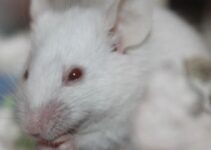Repairing damaged brain cells
Scientists have drawn attention to the possible use of stem cells for repairing spinal cord injuries in recent years. They believe the cells can help to re-establish a connection between detached neurons to restore lost function.
Tuszynski was part of a UC San Diego team that used 3D-printed implants last year to promote neuronal growth in rats. The treatment restored severed connections and lost function in animals with spinal cord injuries.
In the current study, scientists examined the response of damaged brain cells following a spinal cord injury. They used a mouse model for their investigation.
Tuszynski and his colleagues were surprised to find that mature neurons returned to an embryonic state after damage.
Research by a team featuring Fred “Rusty” Gage, a Salk Institute for Biological Studies professor and a UC San Diego adjunct professor, shows that the hippocampal and subventricular regions produce new brain cells routinely all through life.
However, Tuszynski said their work reveals that regenerative ability is not limited to only two areas. An injured adult cell of the cortex returns to the state of an embryonic cortical neuron, he added. The cell then starts to regrow axons in this state if the conditions are right.
Unexpected gene involved
The research team also made another surprising finding. It found that a key genetic pathway for this regeneration involves Huntingtin (HTT), a gene implicated in Huntington’s disease.
Specifically, it is the mutation of this gene that causes the disorder involving gradual brain nerve cell breakdown.
Researchers found that HTT sustains “regenerative transcriptome,” a group of messenger RNA molecules that corticospinal neurons use.
Mice with spinal cord injuries that lacked the gene as a result of genetic engineering displayed much reduced neuronal regeneration.
“Our work shows that Huntingtin is essential for promoting repair of brain neurons,” Tuszynski said. “Thus, mutations in this gene would be predicted to result in a loss of the adult neuron to repair itself.”
He said this reduced neuron repair ability might explain the degeneration seen in Huntington’s disease.
References
http://dx.doi.org/10.1038/s41586-020-2200-5
FEEDBACK:



